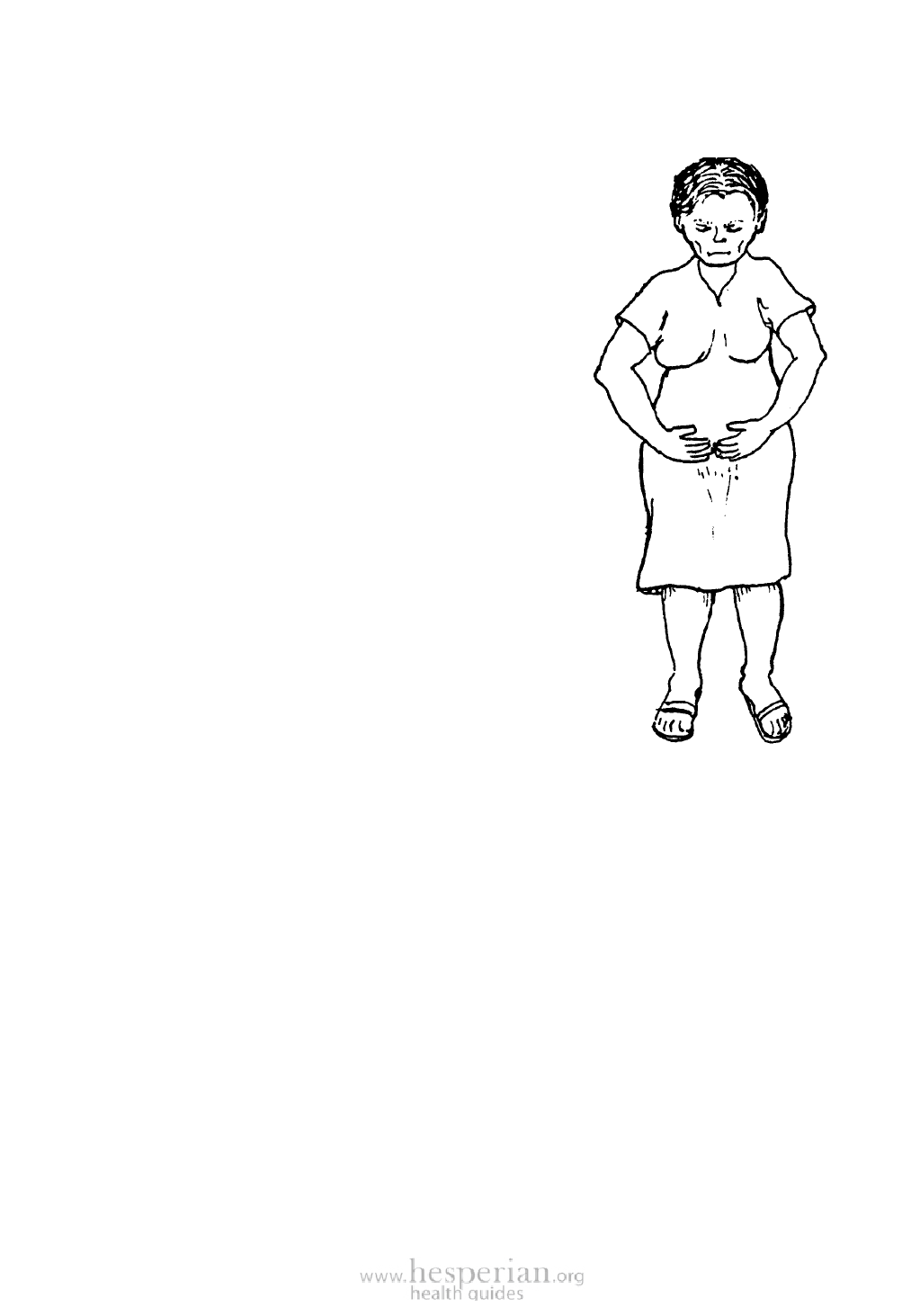
Where There Is No Doctor 2011 243
Pain or Discomfort
in the Lower Central Part of a Woman’s Belly
This can come from many different causes,
which are discussed in different parts of this
book. The following list, which includes a few key
questions, will help you know where to look.
Possible causes of pain in the lower belly are:
1. Menstrual discomfort (p. 246). Is it worse
shortly before or during the period?
2. A bladder infection (p. 234). One of the
most common low mid-belly pains. Is urination very
frequent or painful?
3. Pelvic inflammatory disease. This is a late
stage of gonorrhea or chlamydia (p. 236), with pain
in the lower belly and fever. Pelvic infection can also
happen after birth, abortion, miscarriage, or inserting
an IUD. Treat for gonorrhea and chlamydia, but in
addition to giving the medicines on page 359, also
give 500 mg. of metronidazole 3 times a day for 14
days. If the woman is using an intrauterine device
(IUD), it may need to be removed. See a health worker.
4. Problems that are related to a lump or mass in
the lower part of the belly. These are discussed briefly
on page 280 and include ovarian cyst and cancer.
A special exam is needed, done by a trained health
worker.
5. Ectopic pregnancy (when the baby begins to develop outside the womb
(p. 280). Usually there is severe pain with irregular bleeding. The woman often has
signs of early pregnancy (see p. 247), and feels dizzy and weak. Get medical help
immediately; her life is in danger.
6. Complications from an abortion (p. 414). There may be fever, bleeding
from the vagina with clots, belly pain, difficulty urinating, and shock. Start giving
antibiotics as for childbirth fever (p. 276), and get the woman to a hospital at
once. Her life is in danger.
7. An infection or other problem of the gut or rectum (p. 145). Is the pain
related to eating or to bowel movements?
Some of the above problems are not serious. Others are dangerous. They are not
always easy to tell apart. Special tests or examinations may be needed. If you are
unsure what is causing the pain, or if it does not get better soon, seek medical
help. For more information on treating women’s health problems, see Where Women
Have No Doctor.